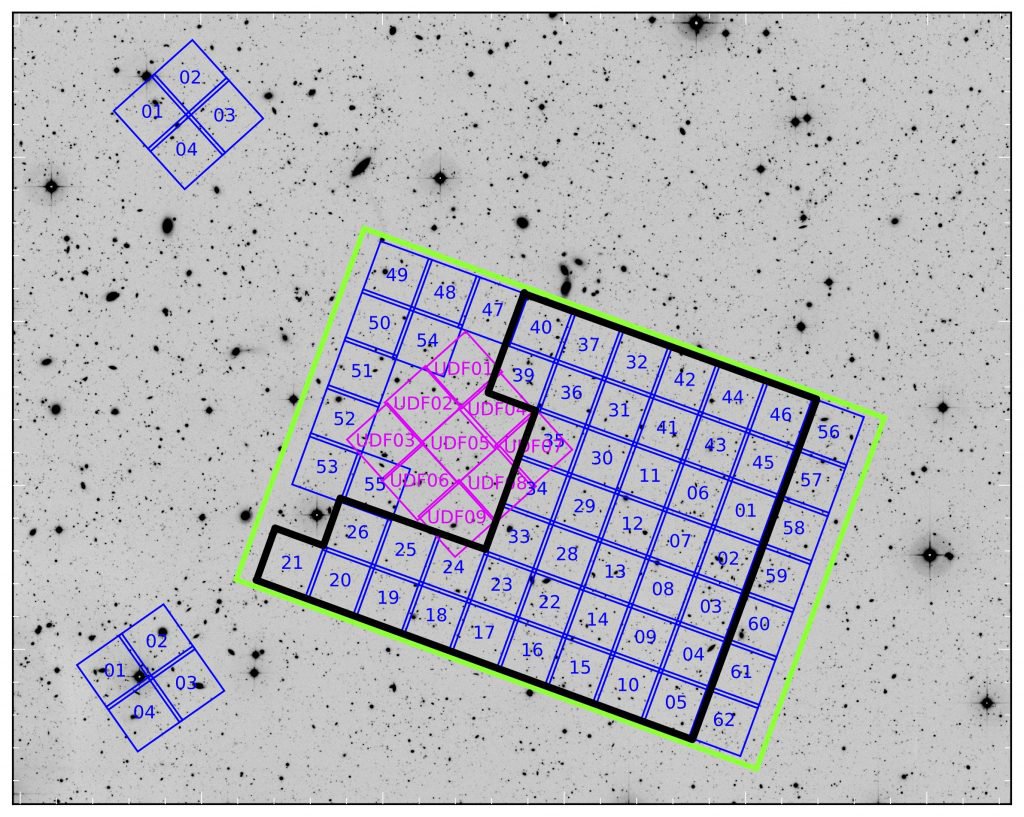Spectroscopic Surveys of Faint Galaxies in Deep Fields
The MUSE-Wide and MUSE-Deep Surveys
MUSE-Wide and MUSE-Deep are blind Extragalactic surveys lead by the MUSE consortium of which the AIP is a member. They complement the deepest Hubble observations by providing a three-dimensional view and by spectroscopically covering the entirety of the fields without the need for pre-selection. They are especially powerful when the Universe was less than a tenth of its current age at redshifts beyond 4, revealing a unprecedented density of star-forming galaxies through their Lyman-alpha emission. Some of these so-called Lyman-Alpha Emitters found with MUSE are so faint in their continuum, that they are not detected in these very deep Hubble images. The first data release of the MUSE-Wide survey, lead by the Galaxies group at AIP includes catalogs, spectra and data-cubes and has been published at https://musewide.aip.de (Bacon et al. 2017, Herenz et al. 2017, Inami et al. 2017, Urrutia et al. 2019).

The MUSE fields layout in the CANDELS-DEEP region (green). The pink fields denote the MUSE-Deep fields in the HUDF, while the black fields belong to the MUSE-Wide region around it. The thick line encloses the 44 fields in the first public data release at https://musewide.aip.de
For the analysis of the MUSE data our team has developed a host of tools, available for the community:
- - LSDCat: a tool to find emission line sources in datacubes (Herenz & Wisotzki 2017, Source code)
- - qtClassify: a visualization tool to help classify emission line sources (Kerutt 2017, Source code)
- - TDOSE: 3-Dimensional Optimal Spectral Extraction (Schmidt et al. 2019, Source code)
- - FELIS: A tool to find emission lines in 1D spectra (Schmidt et al. in prep., Source code)
Scientific highlights from the MUSE surveys in deep Extragalactic Legacy Fields include:
- - The detection of Lyman Alpha Halos around individual star-forming galaxies and study of their covering fraction (Wisotzki et al. 2016, 2018)
- - The determination of the Lyman Alpha Luminosity Function taking into account spatial halo effects (Herenz et al. 2019)
- - A large and non-evolving fraction of Lyman Alpha Emitters from redshifts 3 to 6. (Caruana et al. 2018)
- - A significant clustering signal of Lyman Alpha Emitters (Diener et al. 2017)
We are continuing these blind spectroscopic in deep Hubble Fields with the "MUSE Cosmic Assembly Survey Targeting Extragalactic Legacy Fields" (MUSCATEL). Altogether, we foresee to spectroscopically identify close to 10,000 sources in these MUSE Deep Fields, including more than 3,000 Lyman Alpha Emitters.